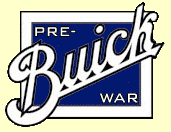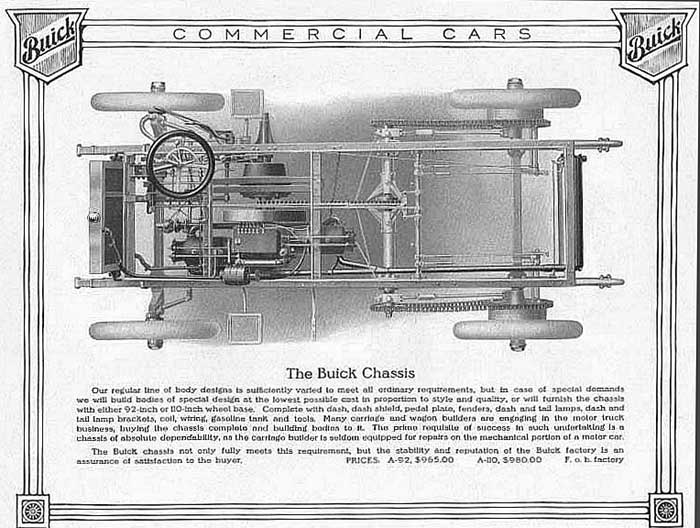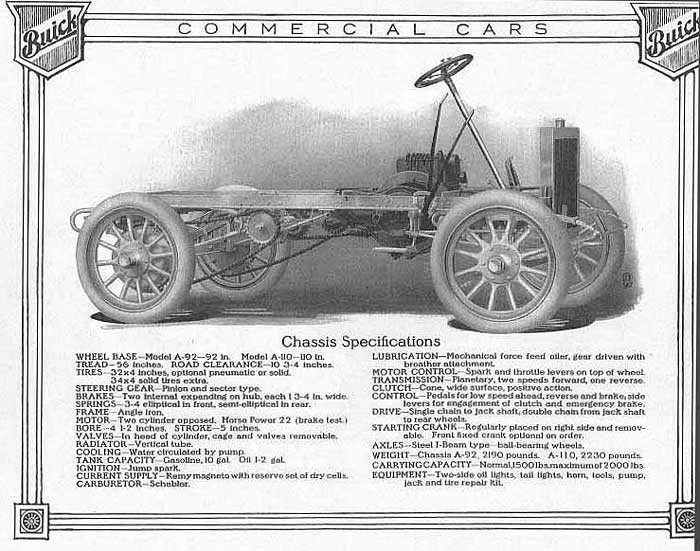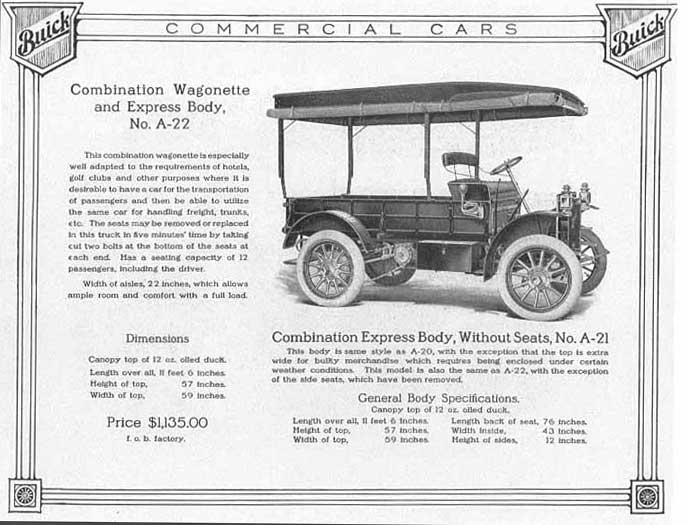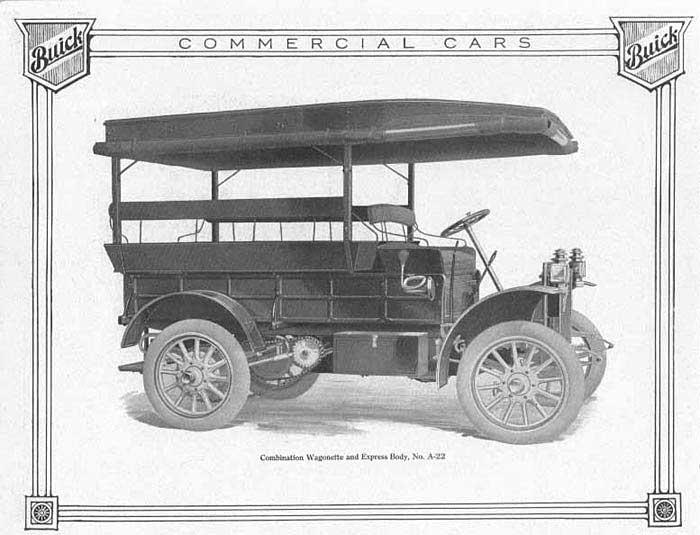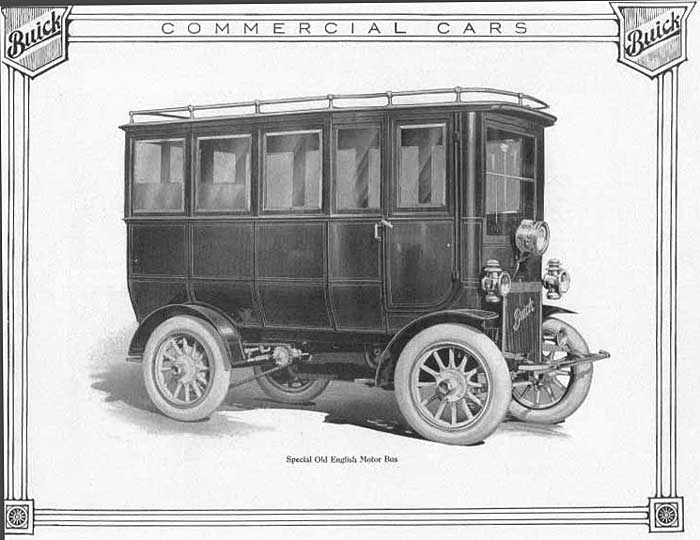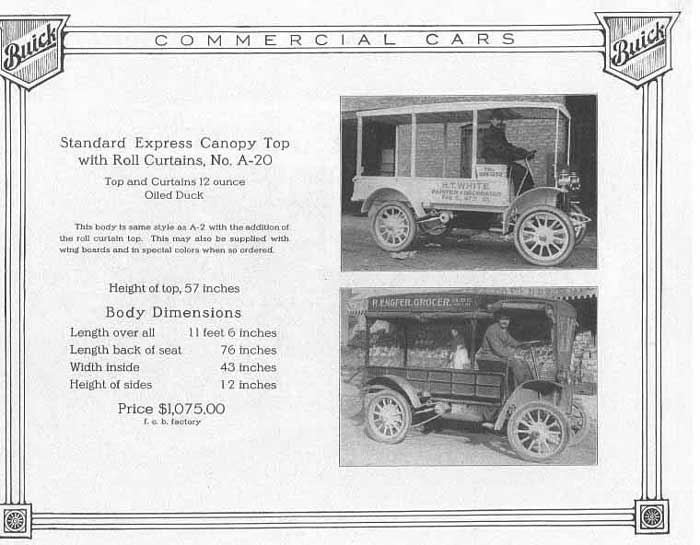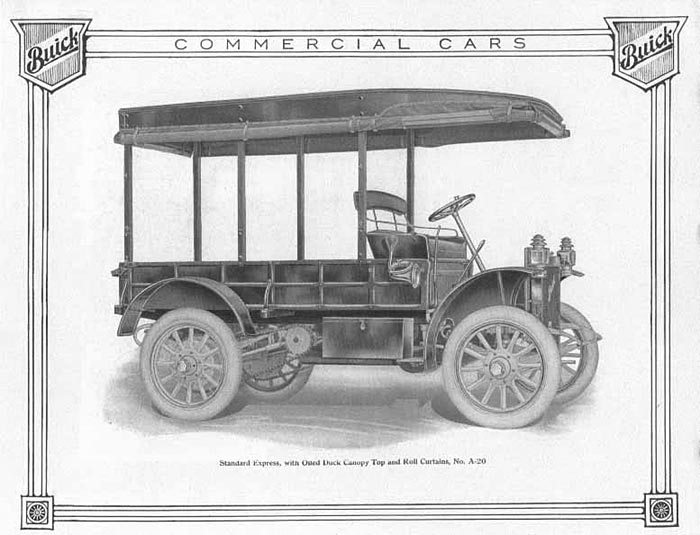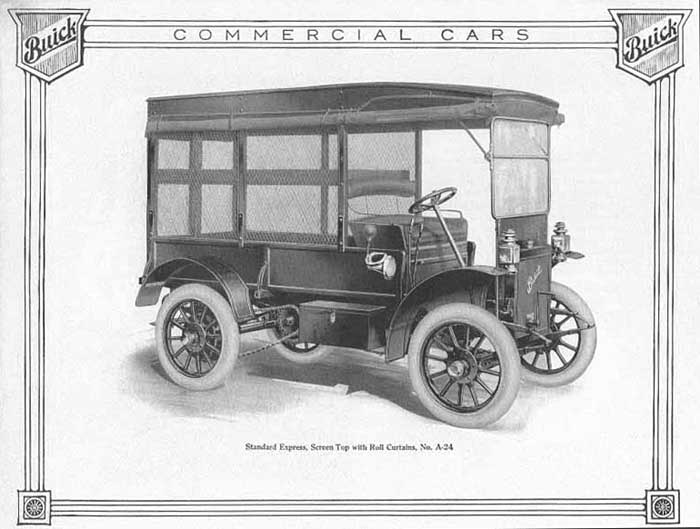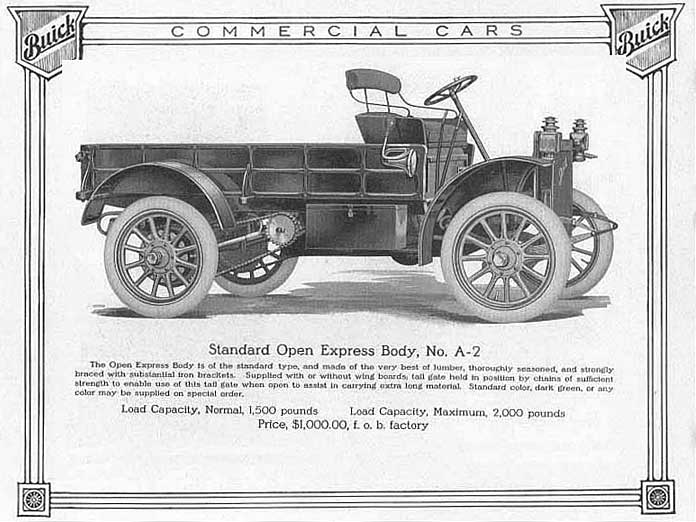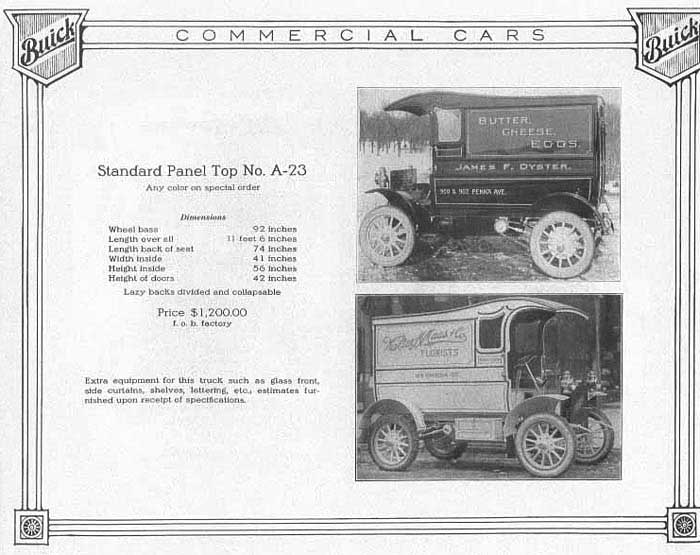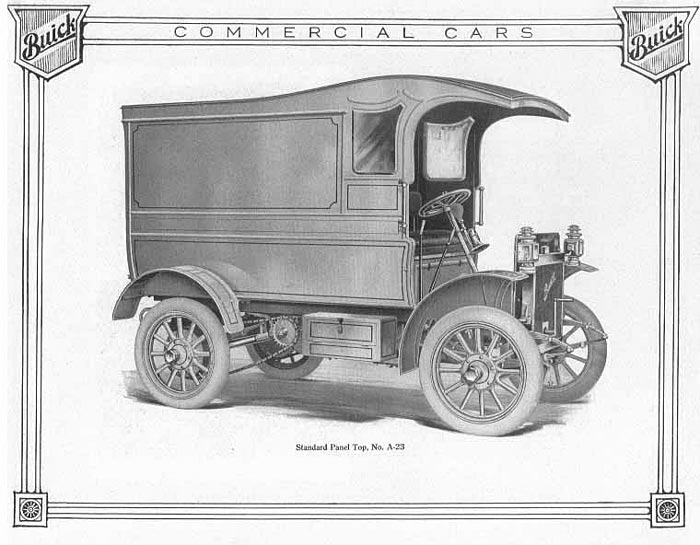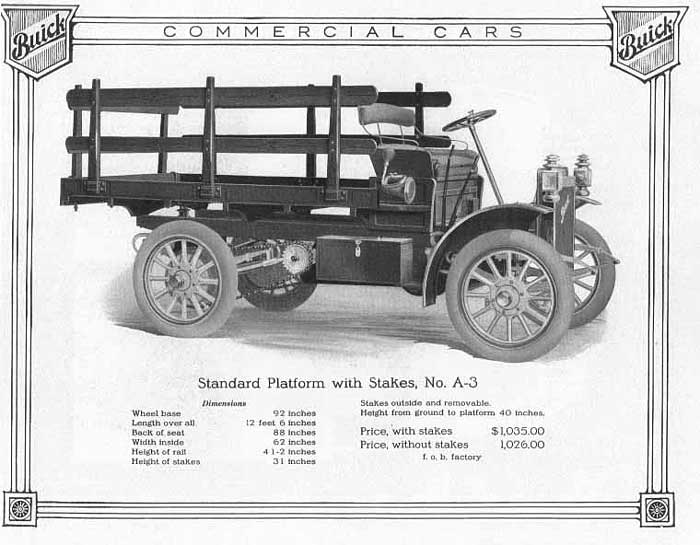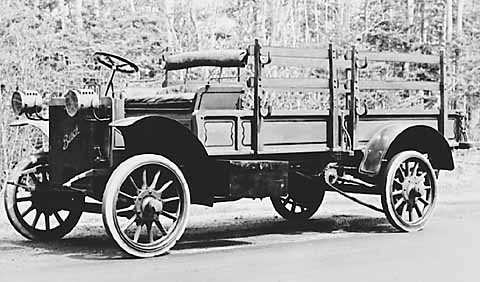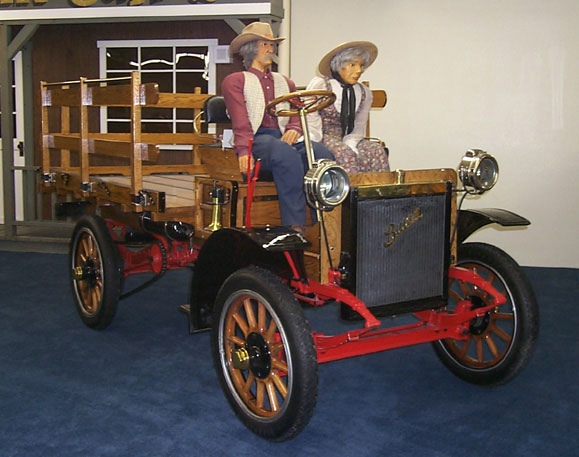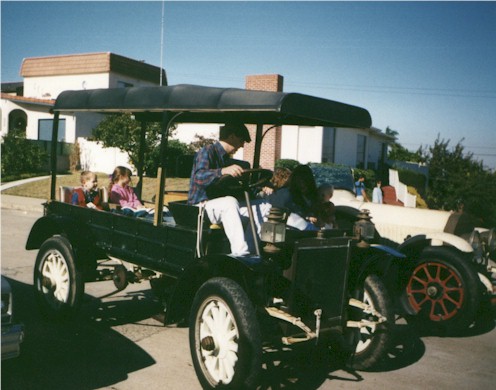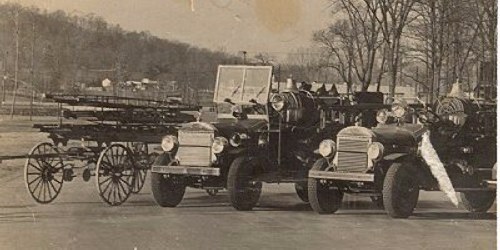Entering the passenger car market in the same year as Henry Ford, Buick then began building light commercial vehicles in 1907, using passenger car chassis. This truck was called the M-2A and was offered with a "plumber's body", probably because David Buick's first fortune was founded on porcelain bathtubs. Buick had been bought out by Billy Durant's fledgling but voracious General Motors in 1905.
The first chassis for commercial use was the Model 2, powered by the "valve-in-head" design for which David Dunbar Buick was well known if not well compensated. This 22-hp two-cylinder horizontally-opposed engine was the same as in the Model F passenger car.
The ¾-ton Model 2 used the engine-under-seat design prevalent in horseless carriages at that time. A two-speed planetary transmission, similar to that used by Ford, transmitted power to the rear wheels via dual chain drive. Two wheelbases were offered, 92-inch and 110-inch, at $965 and $980 respectively for bare chassis.
Factory literature showed several body styles available directly from Buick (General Motors). The 1911 brochure began by stating "…the doom of the horse-drawn vehicle is assured…". Further introductory text read, "The load capacity of our cars is normally 1,500 pounds with a maximum of one ton. By this we do not wish to indicate that 2,000 pounds is the absolute load limit, but drivers are so prone to over-load without regard to road conditions that we set this as the load limit at which our responsibility ceases."
Frame construction was described as having "specially treated steel, angle section, hot riveted…frame fittings are of 3% nickel steel drop forgings." The Buick Commercial Car used I-beam axles, front and back. Steering knuckles were nickel steel forgings also, with tool steel pivot pins, oil hardened and ground. Wheels were of "second growth hickory" with twelve spokes to each wheel. A Remy high-tension magneto was used for ignition on the Buick motor, but a "set of dry cells" was provided as well, this prior to the invention of the electric starter motor by Charles Kettering at Cadillac in 1912. A gear-driven force feed oiler lubricated the engine and outer bearings of the transmission. A water pump assisted in cooling the engine. Brakes were of the expanding type with total braking surface area of 352 square inches. Buick light trucks had a warranty for 90 days in 1910/1911.
In 1912 the two-cylinder engine was superseded by the Buick four-cylinder engine for the ½-ton Model 3 and ¾-ton Model 4. Along with the new larger 37-hp engine, a three-speed sliding gear transmission was adopted using three-point mounting on a sub-frame using a more conventional chassis layout with engine in front of the driver. The clutch was a leather-faced cone type.
In 1916 a bare chassis was priced at $1,150. An additional $100 bought a simple express body. Wheelbase was 122 inches, and 35x5 pneumatic tires were used. All Buick commercial chassis were supplied with pneumatic tires as standard equipment. Buick literature pointed out that although solid tires may last longer, "No solid tire has ever been made that does not subject the motor and driving mechanism to continual jar and vibration that is ultimately more expensive than saving on tire wear." Also standard were electric headlights with a dimmer, electric taillights, trouble lamp with extension cable, electric horn, extra demountable rim, tire pump and complete set of tools. This was considerably more generous than what hundreds of budget builders of light trucks provided at the time.
David Hayward, automotive and military historian in England, notes that the Model 16AA ambulance was based on the D-4 and E-4 vehicles of 1917, built in large numbers in 1916-17 for the US armed forces, and perhaps after 1917 for allied forces. Some were "demobbed" and solf into the British civilian market.
The two commercial models were continued until 1918. The Model 4 was also called the Model D-4 and was advertised as capable of doing four times the work of a pair of mules. However, GM began building the Chevrolet Model T light truck in 1918, and rather than duplicate production, only Chevy and GMC offered trucks.
In 1922 Buick introduced a new inexpensive passenger car, and this chassis served as the platform for a new light truck called the SD4, of which 2,740 were built up until 1923 when GM management again returned to Chevy and GMC badges for light commercial vehicles. Word is that the 4-cylinder truck chasses was built (or, at least, is listed as available) as a 1924 model.
In 1928 an experimental van was built by Buick, which was used by the Flxible Company as a long-distance bus. After the stock market crash of 1929 Buick continued to provide chassis for professional cars, hearses and ambulances.
|
